Understanding SIP Trunking: Functionality, Advantages, and Acquisition
SIP Trunking leverages a data network to connect calls to your PBX. Discover how to reduce telephone expenses with SIP trunks.
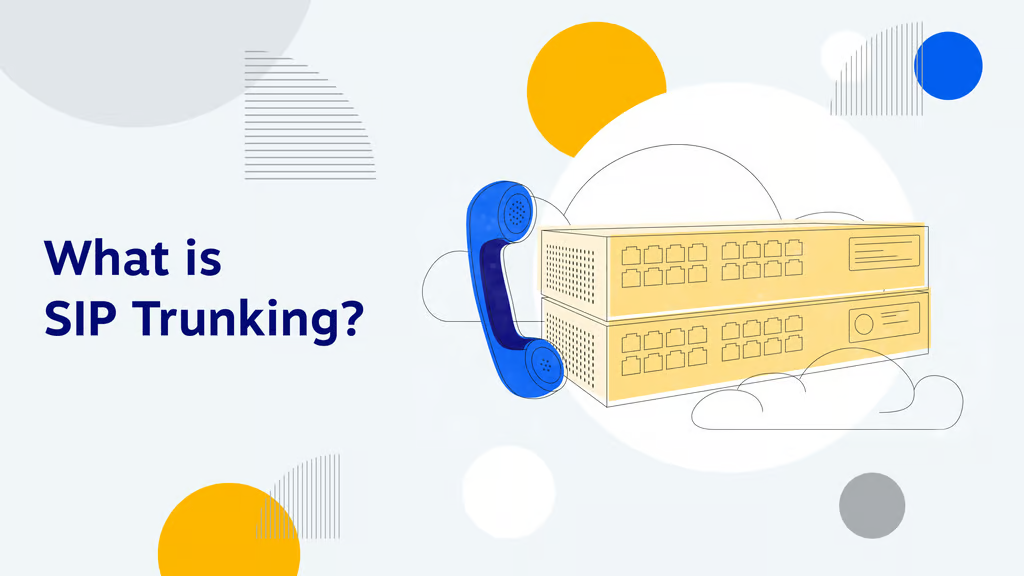
What Exactly is SIP Trunking?
SIP Trunking transforms traditional voice and multimedia communication by routing it through an IP network instead of conventional phone lines. Utilizing the SIP protocol, which operates at the application layer, it orchestrates and maintains communication sessions. The term “trunking” describes the process of merging several channels into one logical pathway, thus facilitating VoIP connections between an organization’s phone system and the public switched telephone network (PSTN).
In practice, SIP trunks link a company’s PBX system directly to the public network, streamlining both incoming and outgoing calls. This method proves to be particularly cost-efficient for small businesses, negating the need for physical wiring and making it uncomplicated to expand or modify the system without additional hardware investments.
SIP trunking paves the way for businesses to modernize their PBX into a fully digital telephony system. This solution is not only economical, particularly for operations with heavy call traffic but also versatile. Providers such as Nextiva have emerged as favorites in this space. Though it may sound complex, SIP trunking facilitates both voice calls and messaging, drawing parallels to the way HTTP functions for internet browsing. Similar to how traditional landlines depend on a phone service provider, SIP trunking requires the support of a dedicated SIP service provider.
Choosing a top-notch SIP trunking service enables the seamless migration of your current PBX over to an internet-based telephony network. It further enhances unified communications by integrating SIP phones, offering synchronized communication channels that significantly elevate efficiency, teamwork, and overall productivity.
How Does SIP Trunking Function?
SIP trunking works as an intermediary between your business phone system and the Internet Telephony Service Provider (ITSP). The diagram below shows how calls flow from a SIP phone (VoIP) in a business to the outside world—it’s fascinating!
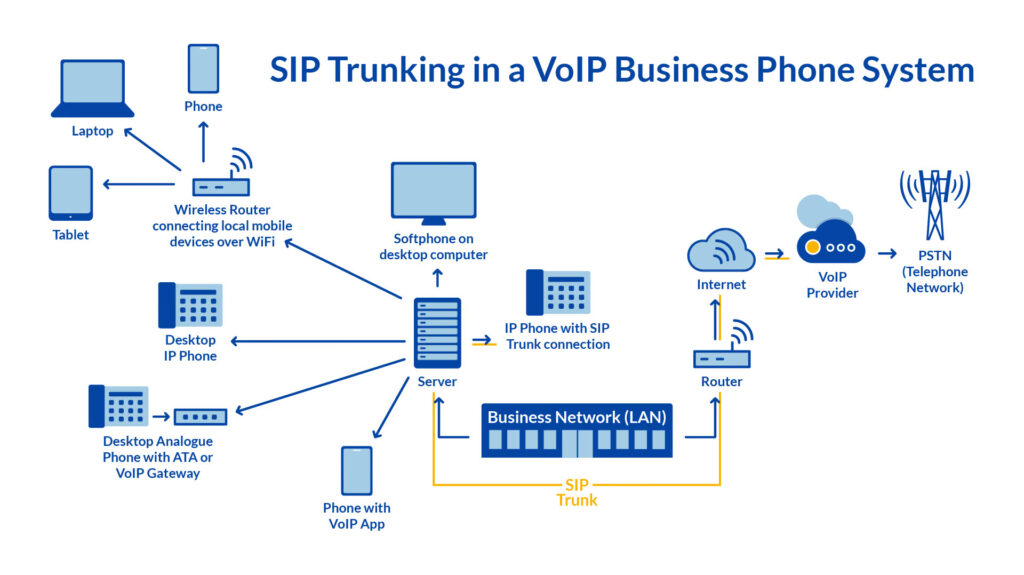
SIP Trunking serves as a bridge between your business’s phone system and the Internet Telephony Service Provider (ITSP). Below is a depiction of call routing from a SIP phone (VoIP) within a business to external recipients, demonstrating a compelling process!
By substituting traditional telephone wires with a digital link, SIP Trunking enables your business to place and receive calls via the internet. It transforms voice communications into digital packets, doing away with the necessity for tangible connections and expensive equipment.”
Switching to SIP Trunking
Here’s what you need to successfully adopt SIP trunking:
- Reliable Internet connection: Calls are made over the internet, so a stable and high-speed internet connection is essential for maintaining clear call quality.
- SIP-compatible PBX system: Your PBX system is central to your phone network. Make sure it's compatible with SIP, or consider upgrading. Some service providers also offer hosted PBX solutions, which can eliminate the need for physical hardware on your premises.
- VoIP phones or softphones:For placing and receiving calls, you'll need SIP-compatible phones (VoIP phones) or you can adapt existing phones using SIP adapters.
- Network connection:Although voice calls are transmitted over the internet, your phones might require a separate network setup for functionalities like internal calls and using the intercom.
Boosting Flexibility with Direct Inward Dialing (DID) Numbers
Direct inward dialing (DID) numbers are a powerful tool available with SIP trunking, offering a cost-efficient method to allocate unique phone numbers to specific employees or departments in your organization.

Here's the breakdown:
- Your Internet Telephony Service Provider (ITSP) gives you several phone numbers, each associated with a distinct SIP extension in your PBX system.
- Calls dialed to a given DID number are directly forwarded to the corresponding extension, bypassing the need for manual transfer by a receptionist or through an auto-attendant.
- The real advantage of integrating DID with SIP trunking lies in the consolidation of multiple phone lines into a single service. This streamlines your operations and slashes infrastructure expenses, as you're only billed for the service, not the individual phone lines.
SIP Trunking: Streamlining Communication for Businesses
SIP trunking steps in as a modern replacement for the traditional and expensive PRI technology, which depends on aging copper lines for transmitting voice and data. Differing from PRI, SIP utilizes VoIP technology and supports various forms of data, including instant messaging and video conferencing. It significantly upgrades PBX systems by introducing more flexibility and reducing costs, making it a perfect match for businesses dealing with high call volumes and seeking to improve communication cost-effectively.
Wondering if SIP trunking is the right move for your business? Ask yourself these questions:
- Are you overpaying for unused call capacity?
- Is maintaining your current equipment proving to be a financial burden?
- Do you face issues with call reliability or experience frequent call drops?
- Do you employ remote workers or have employees who often travel or move around?
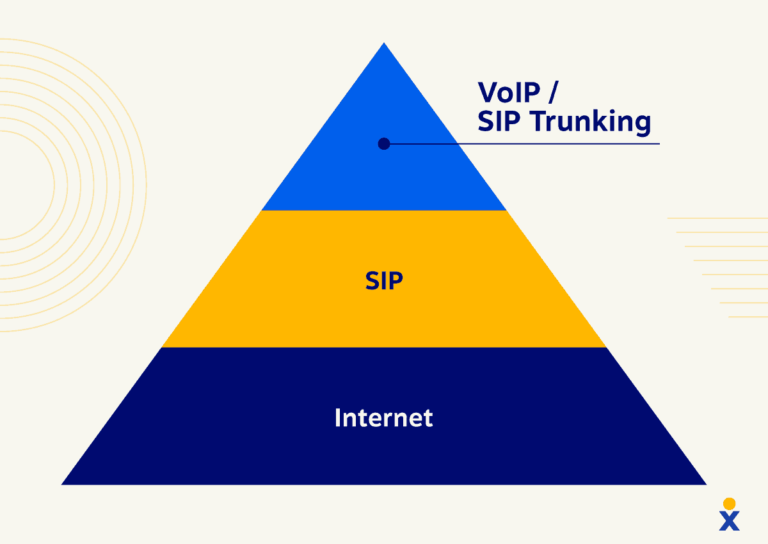
In essence, SIP trunking is pivotal for efficient call setup, management, and disconnection. Its reliable, scalable nature makes it less of a hassle and allows businesses to concentrate on what matters most, leaving communication complexities in the past. Serving as the foundation of VoIP communications, SIP Trunking connects your PBX to the internet, bridging modern VoIP capabilities with traditional telephony.
Unlocking the Advantages of SIP Trunking for Your Business
Wondering about the impact of SIP on your enterprise? SIP trunking bridges your communication devices, offering an integrated experience across voice, video, and text messaging, streamlining your systems and boosting your tech edge. Here’s the scoop.
1) Economical and Efficient
2) Establish a Virtual Presence
3) Scalable to Your Business Needs
As your enterprise blossoms, so do your communication requirements. SIP trunking responds to this evolution by unifying diverse channels and locations into a single communicative framework, thus facilitating expansion. Facing an upsurge in call volume? SIP trunking scales with you, enabling the addition of lines effortlessly without the need for new hardware or extensive service consultations, all manageable in real-time.
4) Unparalleled Reliability
Where traditional telephony might falter due to infrastructure hiccups, weather anomalies, or physical damages, SIP trunking with VoIP stands resilient. It assures operational continuity by dynamically rerouting calls to alternative lines, offices, or mobile devices, guaranteeing your business operations remain fluid and unfazed.
Resolving SIP Trunking Quality of Service (QoS) Challenges
Voice data transmitted via the public internet can encounter disruptions — latency, jitter, and packet loss, which might compromise the clarity of calls if the internet isn’t fine-tuned for live interactions.
Strategy for Mitigation: Activate QoS management protocols on your networking hardware to give voice data the green light over other types. Opt for an internet line dedicated to your SIP trunking needs to elevate quality.
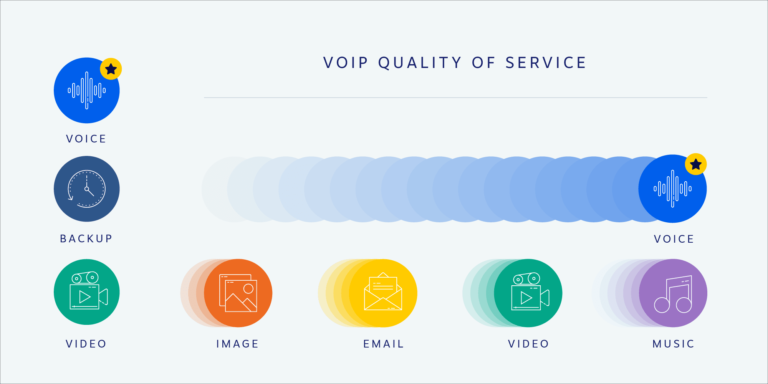
Selecting the Optimal SIP Trunking Solution
Comparing PRI, SIP Trunking, and VoIP
PRI, SIP Trunking, and VoIP stand out as distinct technologies within the realm of voice communications, each bringing its own set of functionalities and deployment methods. Dive into how they stack up against one another:
- Feature
- PRI
- SIP Trunking
- VoIP
Technology
Traditional phone lines
Internet Protocol (IP)
Internet Protocol (IP)
Scalability
Limited, requires additional physical lines
Highly scalable, no physical line limitations
Highly scalable, no physical line limitations
Cost
Higher costs for maintenance and scaling
Lower costs, no physical line expenses
Lower costs, no physical line expenses
Mobility
Limited to physical locations
Supports remote workers and mobility
Supports remote workers and mobility
Features
Basic voice calling
Depends on the specific protocol used (e.g., SIP)
Advanced features like video conferencing, integration with business apps
Flexibility
Rigid, aging technology
Flexible, adaptable to changing needs
Flexible, adaptable to changing needs
Future-proof
May become obsolete as telecom providers phase out support
Future-proof as it uses IP networks
Future-proof as it uses IP networks
Kickstarting Your Journey with SIP Trunking Service
Embarking on the SIP trunking journey is streamlined and straightforward.
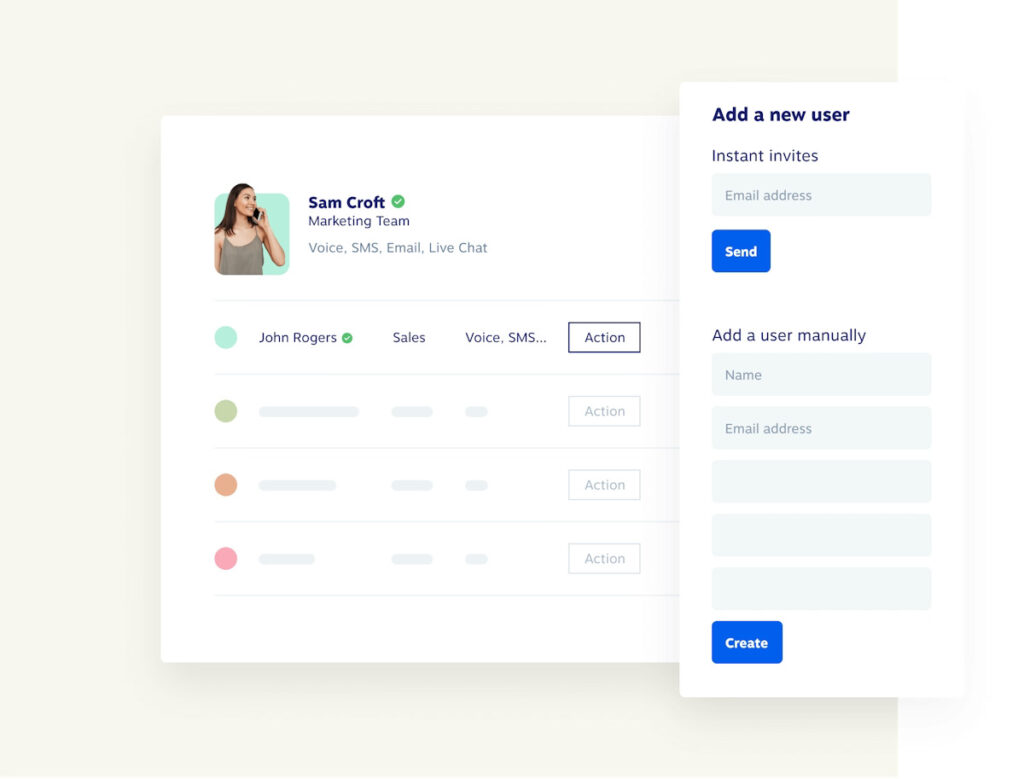
Who Stands to Gain from SIP Trunking?
SIP trunking is an efficient tool for businesses large and small, especially beneficial for those with:
- High Call Volumes: For businesses inundated with calls, SIP trunking offers a cost-effective communication strategy.
- Fluctuating Call Requirements: Companies experiencing variable call volumes find SIP trunking’s scalable nature valuable.
- A Quest for Enhanced Features: Opting for SIP trunking opens the door to a suite of advanced functionalities that bolster communication productivity.
Setting Up SIP Trunking
Integrating SIP trunking into your business framework is a straightforward process with clear advantages. Begin by transitioning from traditional phone systems to SIP trunks, thereby embracing internet-based voice and multimedia communications.
Verify your current phone infrastructure is SIP-compatible, which might necessitate an upgrade to your PBX system or the adoption of a hosted PBX solution provided by your SIP service. Next, partner with your Internet Telephony Service Provider (ITSP) to configure your setup, allowing voice calls to be transmitted as digital data across the internet, thus moving away from conventional physical phone lines.


























